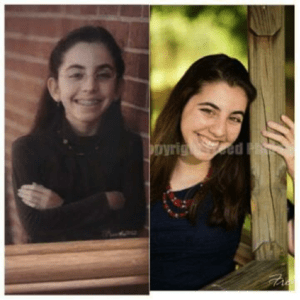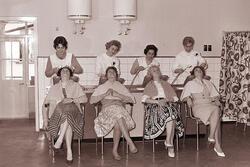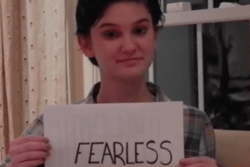Best Dressed Most Stressed
I used to wear tie-dye. A lot of it. I also used to wear awkward length skirts, brightly colored shirts, and sparkly jewelry. It was a middle school phase; everyone is entitled to one. But it was also more than a phase. It was the time before I cared what people thought of me. I didn’t notice that no one around me dressed like I did. I didn’t notice the looks that my rainbow tie-dye skirt got. I loved my clothes and took pride in the funny little shops in California and Israel where most of my wardrobe was from. I loved my flowers and puffiness and stripes and bows. My clothes represented my overall attitude towards the world. I loved everything, and didn’t notice those who didn’t love me.
Then came high school. I remember early freshman year I was excited about a new blue poofy flowered skirt my mom had bought me. I wore it on my birthday and loved twirling in it. But then something changed. I noticed the looks. I noticed the laughs. The societal pressure to fit in hit me hard. I suddenly began to wish desperately that I had the clothing that all the other girls had. I borrowed my twin sister's clothes and spent my weekends shopping at Forever 21 and H&M. I was trying as hard as I could to look like everyone else. I abandoned my chunky necklaces and flowered skirts and replaced them with the tight pencil skirts and sweater shirts that were “in” at my Modern Orthodox Jewish day school. My jeans were tighter and no longer had polka dots. On Saturdays I went to synagogue and prayed to look like everyone else. I felt awkward when I wore tights and the other girls didn’t. I was happy when I chose to wear a dress and I wasn’t the only girl wearing one. The blue flowered skirt that had been my favorite on the first day of ninth grade lay crumpled at the bottom of my closet. The clothes my mother bought me began to drift towards the bottom drawer, where I could ignore them. My old favorite outfits stopped reappearing in the laundry. I folded over tops of skirts and began asking for shorter ones.
By tenth grade I was used to being dresscoded for my short skirts, and I wore maxi skirts on Friday like everyone else. I had officially conformed. I remember one time a girl said to me that she noticed I had revamped my wardrobe the previous year and now had some “really cute” clothes. I was thrilled when people complimented me and told me I looked adorable. I felt on top of the world walking through the hallways and blending in. It didn’t always work, though. One time I wore a brown maxi skirt, green shirt, and a scarf with leaves, and felt really great. “You look like a tree,” one girl said. How can anyone respond to that? I never wore that outfit again. Because of the fear of not fitting in, I stressed about my clothes. Before Shabbat gatherings I would frantically text my friends to find out what kind of clothes they would be wearing. I loved pictures and photoshoots because they were proof that I looked great.
After tenth grade I became more self assured, which translated into the way I dressed. Now I’m a more confident person. I’ve chosen to care about how I feel in my clothes as opposed to about what other people might think of me. I love experimenting. I like tight jeans and bright sweaters and soft leggings, flowered sundresses and old sweatpants and boots with laces, and comfy T-shirts. Some days I wear layers of sweaters, scarves, and sheer shirts, and other days I wear sweatpants. I express myself through my clothes but within the confines of what is defined as “cute.” I feel confident walking through the hallways because I’m happy with the way I look.
My attitude towards fashion and fitting in throughout 9th and 10th grade was unhealthy because my confidence was entirely dependent on those around me. Feminism is about standing up for yourself and for your own views. But fashion is often about fitting in with everyone else, and this pressure can destroy individuality. I would like to build a society in which confidence stems from individuals, not from a forced group mentality. I hope that in the future teenage girls won’t lose their confidence in their clothes or in themselves. I hope they feel validated, not confined, by the people around them. I hope that fashion allows them to express themselves in a stress-free way. And I hope that if someone ever tells a teenage girl that she looks like a tree, she’ll laugh, because she knows that she doesn’t.
This piece was written as part of JWA’s Rising Voices Fellowship.







